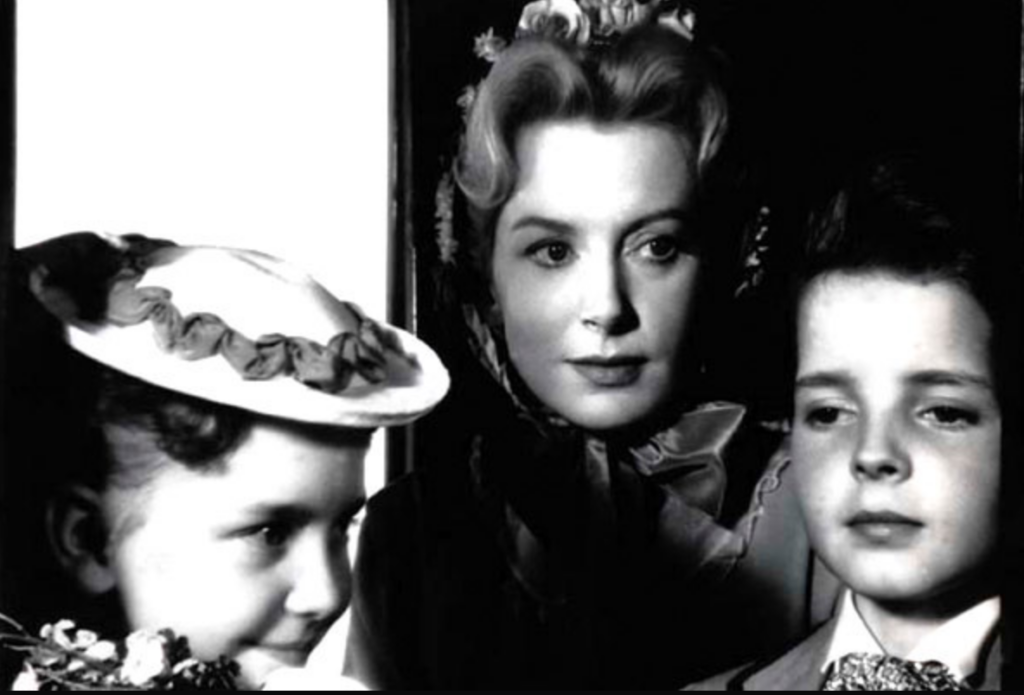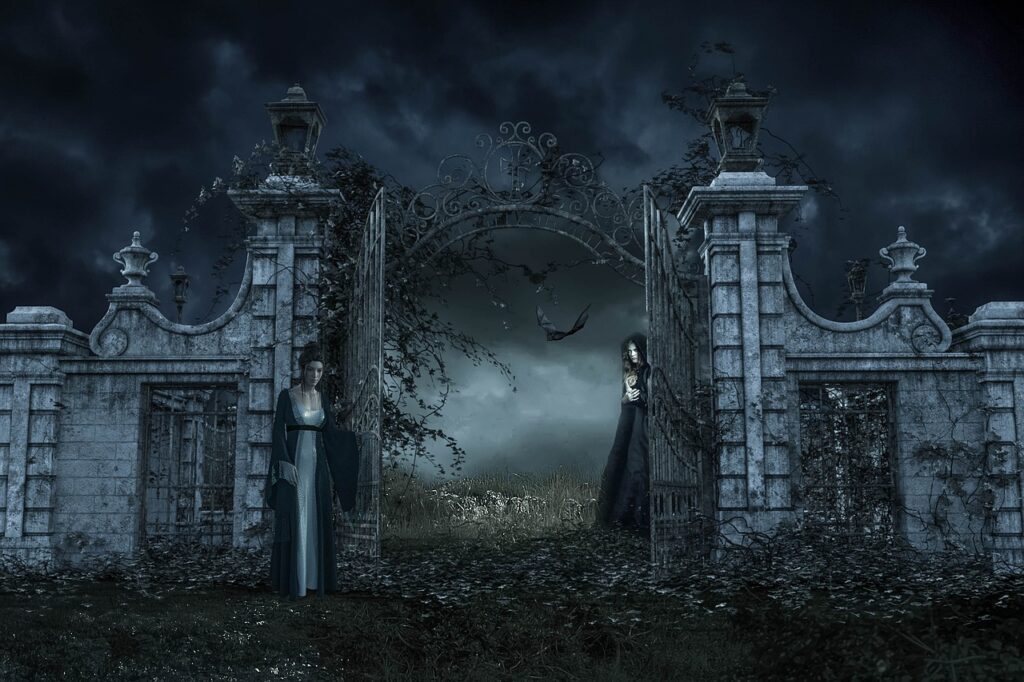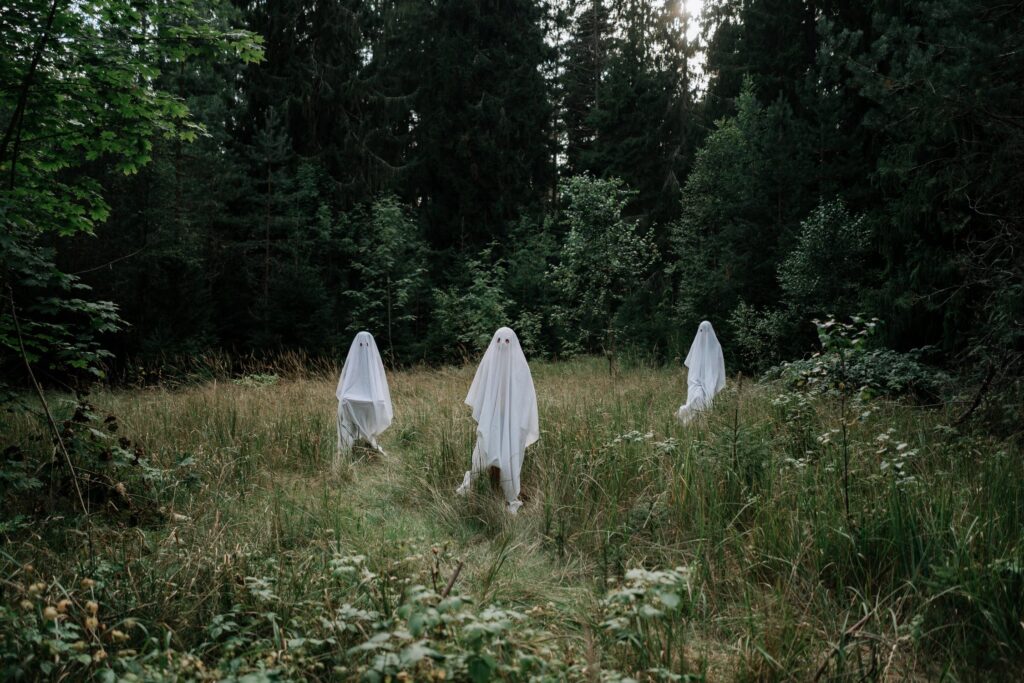Beware: Plot Spoilers Ahead!
What’s more evil than a story in which a couple of demonic ghosts haunt two young children? One in which the children are active and willing participants. Children who have grown to love and embrace the evil they’ve witnessed.
If you’re looking for a Gothic story full of mystery and depth, in which many questions are never answered and the act of exploring them leads down into dark labyrinths, look no further than Henry James’s novella, The Turn of the Screw.

Synopsis
The story is about a governess who is hired to care for two orphaned children – Miles and Flora – who live in their Uncle’s country house in England. As soon as the governess arrives, she discovers that something is amiss with the two children. Their actions are often furtive and range from curious to openly malevolent. The governess, the book’s protagonist sets out to uncover the source of the two children’s strange behavior and to save them from whatever forces are acting against them.
But in this ghost story, the children are the true antagonists. She soon discovers that they have no desire to be saved and are eager to hold her at bay, keeping her in a state of ignorance. Rather, they seek out and encourage the presence of the two ghosts whose intentions are unquestionably nefarious.
The Theme
In this novella, James examines the loss of innocence and the extent to which adults intentionally or unintentionally act as a destructive force in the lives of children.
In conjunction with this theme, he uses at least four Gothic tropes: ghosts, unexplained deaths, isolation, and orphans.
Gothic Tropes
Ghosts: The story features two ghosts – those of the prior governess (Miss Jessel) and gardener (Peter Quint), who, in life, had been engaged in a romantic relationship. The new governess eventually discovers that when they were living at the country house, these two individuals knowingly exposed the children to and caused them to participate in their sexual activity. They made no attempt to save or preserve the children’s innocence and instead, were active contributors to its loss.
Unexplained Deaths: Miss Jessel and Peter Quint both died mysteriously. He supposedly died from a slip-and-fall accident on an icy walkway, which seems unlikely for a relatively young man. James leaves the readers to speculate as to how he may have actually died.
Miss Jessel’s death is unknown. It is implied that she may have committed suicide, but James never supplies a motive other than what the reader might speculate. As a ghost, she comes to the children, telling them that she wants them to join her in hell. The deaths of these characters mirrors an inexplicable loss such as the loss of innocence in childhood. And Miss Jessel’s overt comments are consistent with the theme in that she is a destructive force in the children’s lives.
At the end of the book, the little boy, Miles, dies unexpectedly, which is perfectly in keeping with the theme. There is much speculation as to why or how the boy dies. However, I believe that the most likely interpretation is that it is the new governess who killed him. This answer parallels the theme the most closely – that despite her desire and attempts to save the children and preserve their innocence, she is the ultimate cause of their destruction.
Isolation: This story features a strong sense of isolation. The children are isolated by virtue of their status as orphans, which we’ll address in a moment, but the governess is also isolated. The children are actively attempting to hide their doings from her so that she must struggle to uncover the truth on her own. The Uncle is irascible and indifferent to her anxiety. The housekeeper is kind but largely ignorant, although she does share some of the history of the family. This leaves the governess isolated both mentally and emotionally. She must struggle through the theme’s question on her own. In the book, this mirrors the emotional response we should have to the children’s loss of innocence. Her loneliness mirrors their tragically enlightened state.
Orphans: While the orphaning of children is not necessarily a classic Gothic trope, it acts as one in The Turn of the Screw. In the story, they are orphaned in one sense or another by several different parties. First, their parents died, leaving them unprotected from external [potentially evil] influences such as those from Peter Quint and Miss Jessel. Second, their Uncle, a man who should have stepped in and played this role in their parents’ absence, has no interest in their lives and is, at best, nothing but a distant benefactor. He has orphaned them simply by virtue of his absence in their lives. And last, but not least, Miss Jessel and Peter Quint orphaned these children in a figurative sense by actively subjecting them to activities that are inappropriate for children and which destroyed their innocence.
All of these tropes mirror the theme’s exploration of the role that adults play in failing to guard against or overtly causing a child’s loss of innocence.
Is the book really Gothic?
First let’s look at the theme. It’s definitely irrational. The extent to which even the most well-intentioned adults cannot save children from a loss of innocence and instead, by virtue of their own failings, further this inevitable loss, is a spiritual question. A question of the transference of dark enlightenment. It’s a theme that we can all understand and yet it can’t be proven empirically.
And second, let’s examine the use of the tropes. The ghosts are specific to the theme, in particular to the loss of the children’s innocence. They are the most direct evidence of the role adults play in that loss. The unexplained deaths are not general as they might be in a horror story, but are specific to those who either directly caused the loss of innocence or to Miles, who was the new governess’s principle focus. Because of that, they are highly specific to the theme and the governess’s exploration of it. And lastly, the sense of isolation (for the governess or for the orphaned children) is not meant to heighten fear or drag a secret sin out into the open as it would be in the Horror genre. Rather, James uses this isolation to cause the reader to feel the weight of their loss of innocence. Thus, the tropes all exist to support the Gothic theme.
To summarize: yes, I would say that The Turn of the Screw is absolutely Gothic, traditionally Gothic in every sense – the irrational theme, the use of supportive, Gothic tropes, and even the subtle and growing undertone of terror are consistently Gothic.
If you enjoyed this post, share it with your friends!








